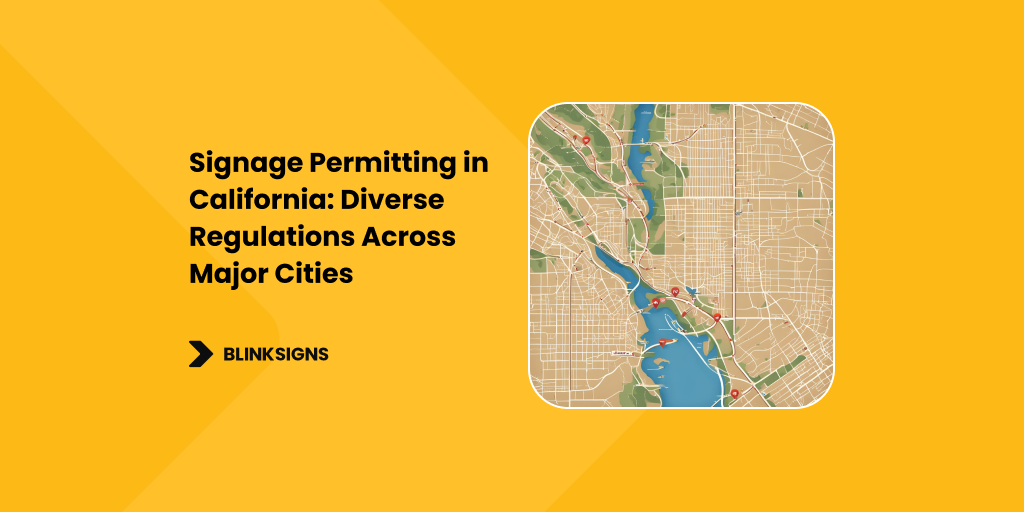
Signage Permitting in California: Diverse Regulations Across Major Cities
California’s diverse landscape, from sprawling urban centers to historic districts and coastal cities, presents a complex web of signage regulations. Businesses looking to install signs must navigate a combination of statewide laws and city-specific ordinances, each with its own set of requirements, restrictions, and environmental considerations.
This guide breaks down the diverse signage permitting regulations across California’s major cities, providing valuable insights for business owners and sign companies.
Understanding Signage Regulations in California
The foundation of signage regulations in California begins with the California Building Standards Code (CBSC), which sets general safety and structural standards for signs across the state. The code ensures that all signs are structurally sound, do not pose hazards, and meet accessibility guidelines, especially concerning the Americans with Disabilities Act (ADA).
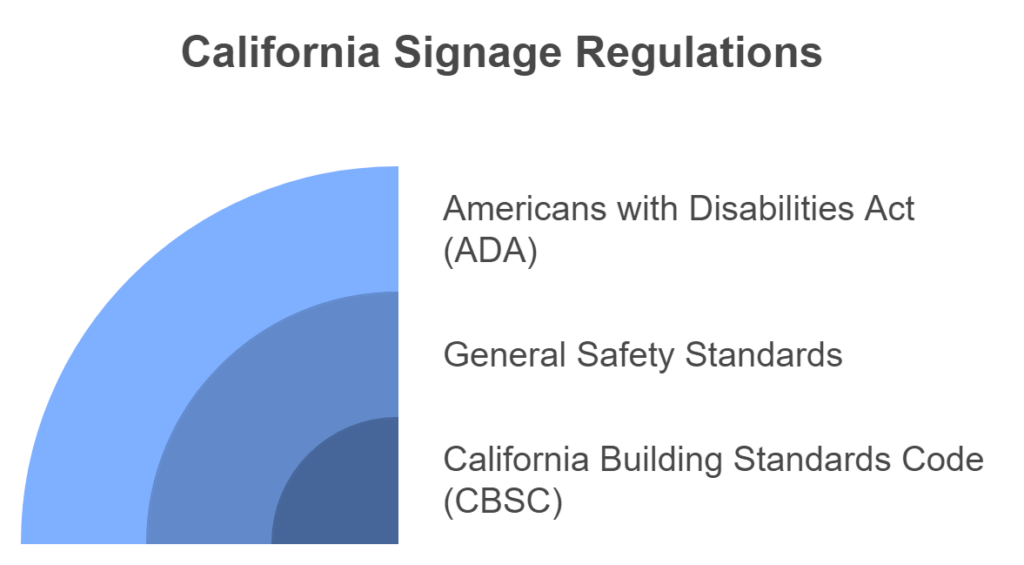
California Signage Regulations
However, beyond this statewide framework, individual cities impose additional restrictions and guidelines based on local priorities such as aesthetics, environmental impact, and zoning laws.
For instance, cities like San Francisco and Los Angeles have stringent signage regulations to preserve historical areas and minimize environmental impact. In contrast, places like San Diego and Sacramento have more flexible rules in commercial zones but still adhere to specific local ordinances.
Understanding the state and local layers of regulations is essential for businesses to avoid penalties, delays, and compliance issues.
Moreover, California’s environmental regulations, such as the California Environmental Quality Act (CEQA), play a significant role in signage permitting.
Signs that may impact air quality and wildlife habitats or increase light pollution face additional scrutiny.
This makes it imperative for businesses to understand environmental impact assessments when applying for sign permits, especially in areas near parks, coastal zones, or environmentally sensitive regions.
Los Angeles: Navigating Strict Signage Ordinances
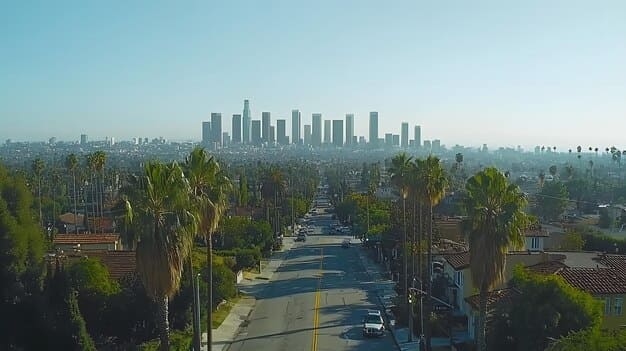
aerial-view-downtown-los-angeles
Los Angeles, the largest city in California, has some of the strictest signage regulations in the state. The Los Angeles Department of Building and Safety (LADBS) oversees the city’s permitting procedure, which entails a number of approvals that are dependent on the proposed sign’s type, location, and size. Key factors influencing signage permits in LA include zoning laws, environmental considerations, and community impact.
One of the city’s most significant signage ordinances is the Los Angeles Sign Code, which imposes restrictions on outdoor advertising, digital signage, and billboards. While billboards are ubiquitous in some parts of LA, the city has banned new billboards in most areas except designated “sign districts.” These districts, often in commercial or entertainment zones, are the only places where new billboards and large digital signs can be installed, but even here, there are height and brightness restrictions.
Digital signs and LED displays face stringent restrictions in residential areas due to concerns about light pollution and traffic safety. The city also has a dedicated ordinance that governs the placement of digital billboards, known as the Off-Site Signage Ordinance, which severely limits where these signs can be placed.
Beyond that, businesses must comply with height and size restrictions that vary based on the zoning category—whether it’s residential, commercial, or industrial. Signs in commercial zones like Hollywood may be allowed larger, more prominent displays, but they still need approval from LADBS.
Permitting Process Table for Los Angeles
| Sign Type | Permit Requirements | Zoning Considerations | |
| Building Signs | Plans, structural drawings, zoning approval, inspection required | Restricted in residential zones, special districts apply | |
| Freestanding Signs | Plans, zoning approval, environmental impact assessment | Prohibited in most residential areas | |
| Digital/LED Displays | Special permits, traffic studies, environmental review | Prohibited in residential areas, allowed in specific commercial zones | |
| Temporary Signs | Application with size and location details | Varies by district; prohibited in certain areas |
This table outlines the varying requirements for different types of signage in Los Angeles, making it easier for businesses to understand the cost and complexity involved.
San Francisco: Signage in a Historical and Environmental Context
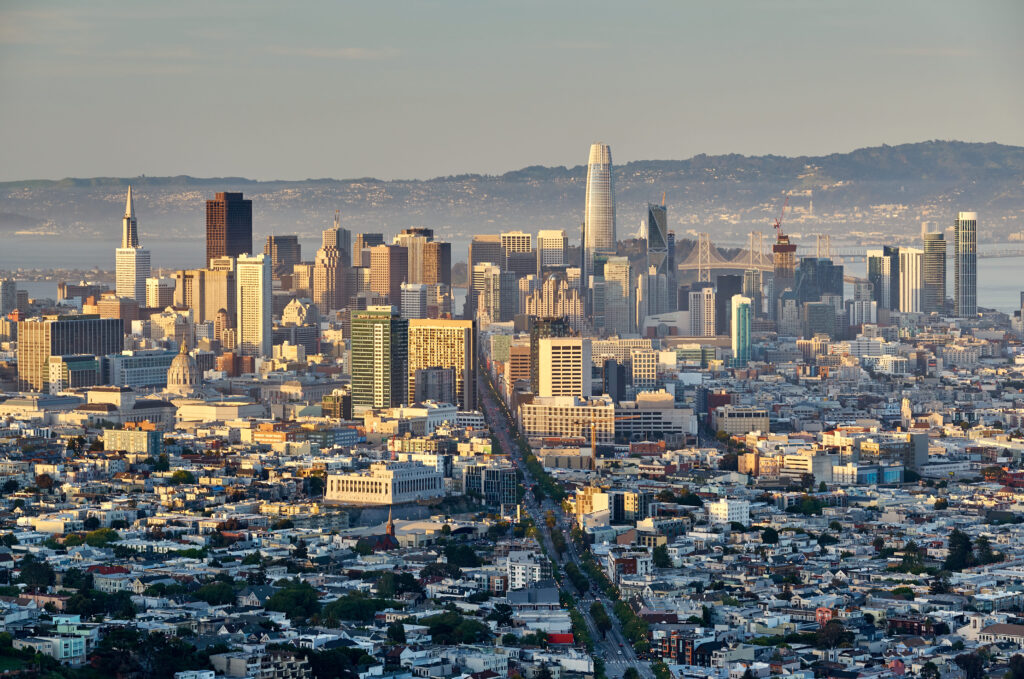
san francisco skyline california
San Francisco’s signage regulations reflect the city’s dedication to preserving its historical character and natural environment. The San Francisco Planning Department is in charge of the city, which has some of the strictest regulations in California, particularly for businesses near environmentally sensitive areas or in historic districts.
In historic districts, such as Haight-Ashbury and Chinatown, signage is closely regulated to ensure it fits the neighborhood’s architectural style and historic character. Businesses must often get approval from the San Francisco Historic Preservation Commission before installing new signs, which can significantly extend the permitting process.
San Francisco also has stringent environmental regulations that impact signage, particularly near parks or the coast. Signs near Golden Gate Park or Crissy Field, for example, must comply with environmental guidelines limiting the size, brightness, and materials used to prevent negative impacts on wildlife and the surrounding environment. These rules are part of the city’s compliance with the California Coastal Act, which seeks to protect the state’s coastal zones from development that could harm the ecosystem.
Digital signage is especially restricted in San Francisco. The city has banned new digital billboards in most areas and limits the brightness and operational hours of existing digital signs, especially near residential neighborhoods and natural reserves.
San Diego: Commercial Signage and Permit Processes
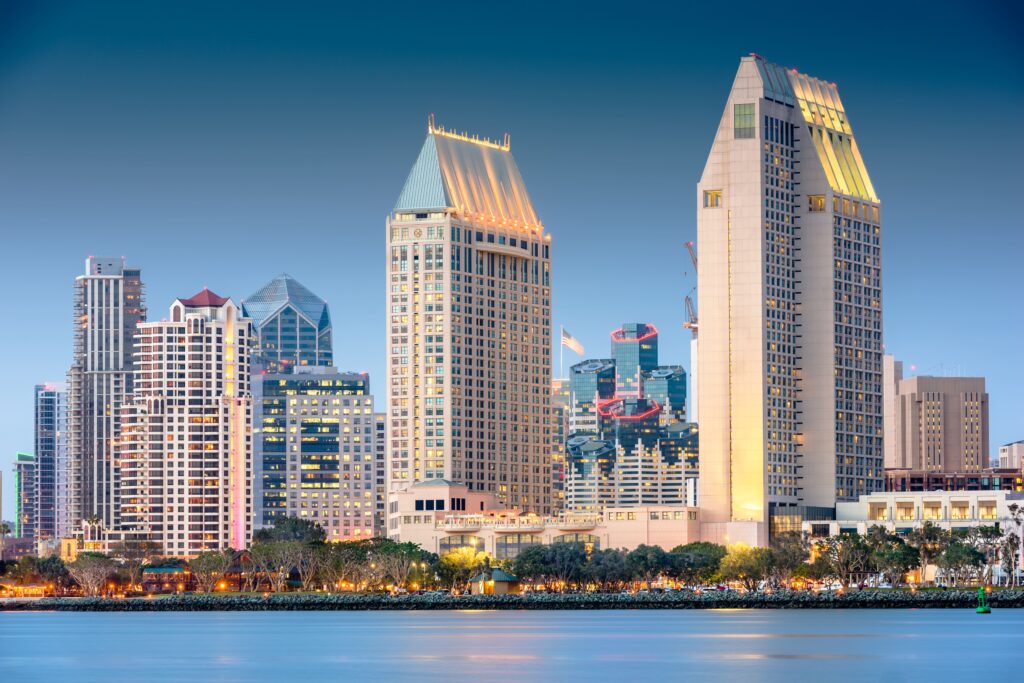
san diego california usa cityscape
San Diego’s signage regulations are generally more flexible than those of Los Angeles or San Francisco, especially in commercial zones. However, the city still has specific rules that businesses must follow. The Development Services Department, which oversees everything from permanent signs to temporary event signage, is in charge of permitting in San Diego.
In commercial zones like Gaslamp Quarter and Mission Valley, businesses can typically install larger signs but must adhere to size, height, and placement regulations. Digital signage is permitted in these areas but must meet the city’s brightness standards and not distract from traffic or nearby businesses.
San Diego also has a streamlined process for temporary signage permits. Businesses can apply for temporary permits for promotional signs, event banners, and seasonal displays. These permits are usually easier to obtain but have restrictions on the display’s size, location, and duration. For example, event banners can only be displayed for a limited period before and after the event, and businesses must ensure that these signs do not obstruct views or pedestrian walkways.
In addition, environmental considerations are important, especially for signs installed near San Diego’s coastal areas, which fall under the California Coastal Act. Businesses in these areas must conduct environmental impact assessments to ensure their signage does not harm the local ecosystem or disrupt scenic views along the coast.
Sacramento: Differentiating Rules for Downtown and Suburban Areas
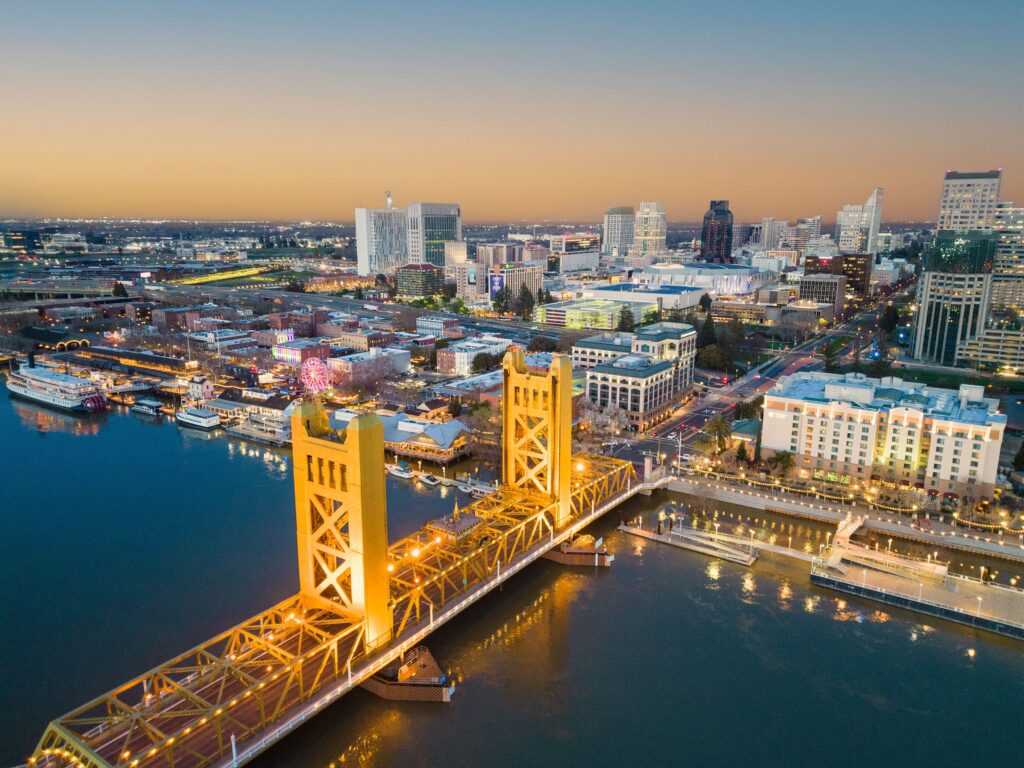
aerial shot of the tower bridge Sacramento
Sacramento’s signage regulations vary significantly between its downtown core and the surrounding suburban areas. The Community Development Department manages the signage permitting process and enforces zoning rules that dictate where and what types of signs can be installed.
In downtown Sacramento, signage is strictly regulated to preserve the city’s aesthetic and to prevent visual clutter. Businesses are often limited to smaller, more discreet signs, especially near landmarks like the California State Capitol and Old Sacramento. Neon signs and large billboards are generally prohibited in these areas, and businesses must follow specific design guidelines to maintain the city’s historic and governmental image.
In contrast, suburban areas around Sacramento have more lenient rules for signage. Businesses in neighborhoods like Blinksigns can often install larger signs and digital displays with fewer restrictions if they adhere to the general size and height limits. The process for obtaining a sign permit in suburban areas is also simpler and faster than the more complex procedures downtown.
San Jose: Digital Signage and Technology-Focused Restrictions
San Jose, as the heart of Silicon Valley, is at the forefront of incorporating digital technology into its urban landscape, and signage is no exception. However, the city specifically restricts digital signage and LED displays to balance innovation with public safety and aesthetics. The San Jose Planning, Building, and Code Enforcement Department regulates all signage in the city.
Businesses in San Jose’s commercial districts, such as Santana Row and Downtown San Jose, can apply for permits to install digital signs. Still, the signs must comply with brightness standards and operational hour limits. For instance, digital signs cannot exceed a certain brightness level during night hours to avoid disturbing nearby residents, and they must be turned off during late hours in residential areas.
The city’s regulations also address the placement of electronic message centers (EMCs), which tech companies frequently use for dynamic displays. These signs are allowed in industrial zones but restricted in residential and mixed-use areas to prevent light pollution and driver distractions.
Oakland: Zoning-Based Signage Regulations
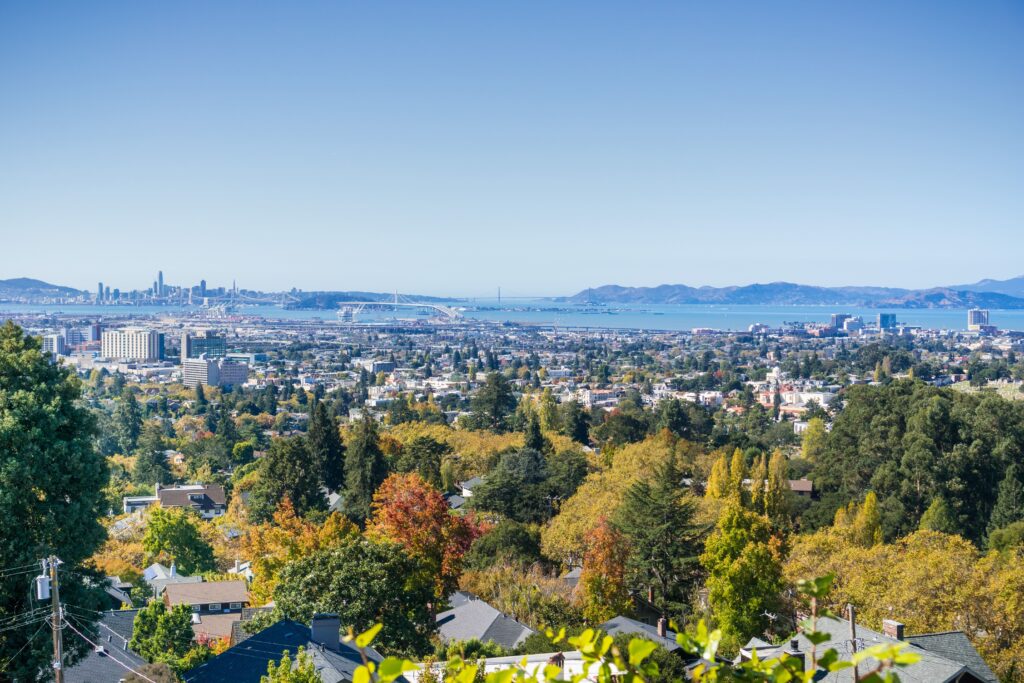
residential area in oakland
Zoning regulations, which specify the size, height, and positioning of signs in various parts of the city, significantly influence Oakland’s signage regulations. The Planning and Building Department oversees the permitting process, and businesses must comply with both city-wide ordinances and zoning-specific regulations.
In industrial zones like West Oakland, businesses have more flexibility regarding signage size and illumination. Large freestanding signs and illuminated digital displays are permitted, making this an ideal area for businesses that want to install more prominent signage.
In residential zones, however, signs must adhere to strict height and size limits to preserve the neighborhood’s character. For example, signs for home-based businesses or small neighborhood shops are typically restricted to smaller, non-illuminated designs that blend in with the residential surroundings.
Sign Permit Types: Temporary vs. Permanent Permits
California’s major cities differentiate between temporary and permanent sign permits. Temporary signs, such as those for promotional events, sales, or seasonal campaigns, typically have a shorter and simpler application process. However, these permits are subject to size and duration restrictions. On the other hand, permanent signs require more extensive review, including structural assessments, zoning approval, and sometimes environmental impact reports.
Common Compliance Issues Across Major Cities
Despite the varied regulations across California’s cities, certain compliance issues are common. Many businesses face fines or delays due to:
- Failing to obtain proper permits before installation
- Ignoring zoning laws, especially in residential and historic districts
- Installing signs that exceed height or size limitations
- Neglecting to account for environmental impact assessments
Businesses can avoid these pitfalls by working closely with local permit authorities and understanding the specific regulations for their location.
Environmental and Aesthetic Standards for Signage
California strongly emphasizes environmental protection and aesthetic consistency in signage. Many cities, especially those with scenic views or historic districts, require signs to be designed to minimize visual pollution and preserve the area’s character. Businesses near natural reserves or parks, such as Griffith Park in Los Angeles or Golden Gate Park in San Francisco, must ensure their signage does not harm the surrounding environment or disrupt wildlife.
Key Authorities and Application Processes for Major Cities
Each city in California has its own governing body that oversees signage permitting.
- Los Angeles: Department of Building and Safety
- San Francisco: Planning Department
- San Diego: Development Services Department
- Sacramento: Community Development Department
- San Jose: Planning, Building, and Code Enforcement Department
- Oakland: Planning and Building Department
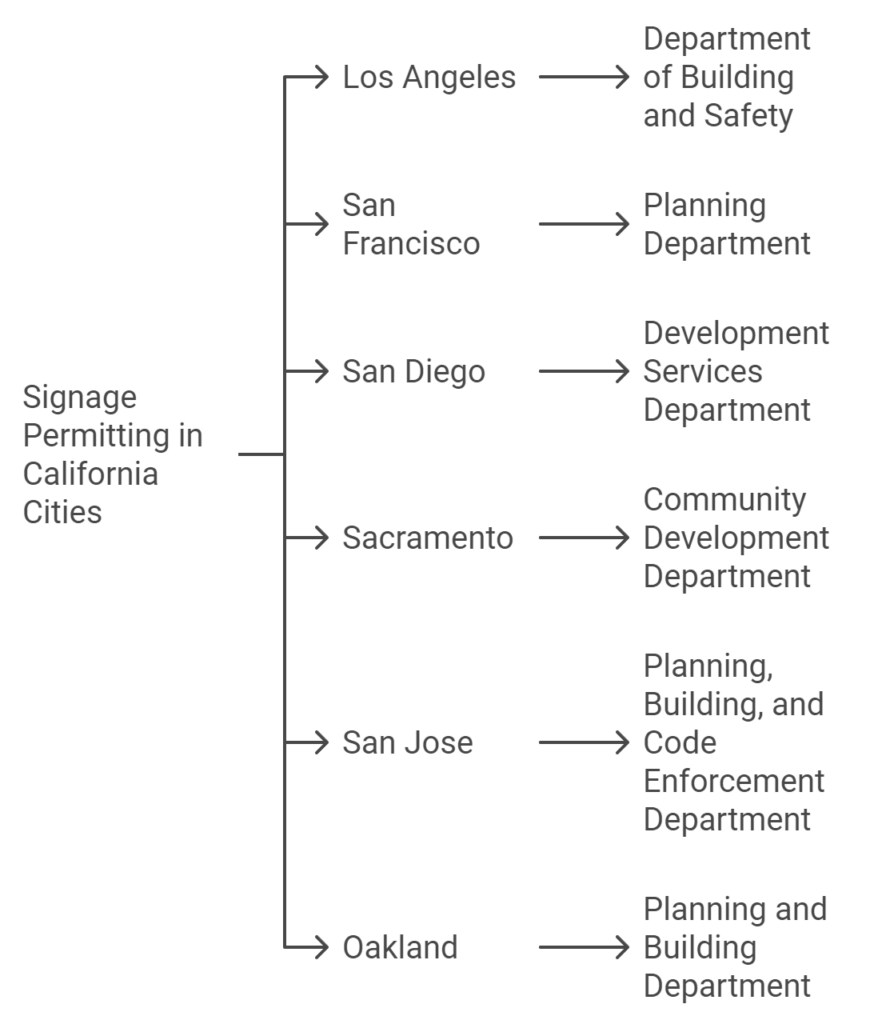
Signage permitting in California cities
Businesses should know these authorities and their application processes to ensure smooth and timely permit approval.
Recent Updates to California’s Signage Laws
Signage regulations across California’s major cities are continually evolving. Recent changes for 2023/2024 include:
- Los Angeles: Stricter controls on digital billboards and LED signs in residential areas
- San Francisco: New environmental regulations for signage near coastal zones
- San Diego: Simplified permitting processes for temporary event signage in commercial zones
How BlinkSigns Eases the California Signage Permit Process
Navigating California’s complex signage regulations can be overwhelming, with each city enforcing its own rules. At BlinkSigns, we simplify this process for our clients by offering:
- In-Depth Expertise: Our team is well-versed in signage regulations across major cities like Los Angeles, San Francisco, and San Diego. From filing initial permit applications to ensuring full compliance with city ordinances, we manage the entire process for you.
- Tailored Signage Solutions: We create signage that reflects your brand and meets the strict standards of each city’s regulatory framework. Our designs are crafted with local compliance in mind, making approval smoother and faster.
- Efficient Project Management: Our optimized workflow ensures that your signage project transitions seamlessly from concept to installation, reducing the risk of delays or setbacks often encountered during permitting.
Conclusion
With diverse regulations spanning California’s major cities, businesses must carefully navigate the permitting process to ensure compliance. By understanding the specific rules for their location, whether in Los Angeles, San Francisco, or San Diego, businesses can avoid fines, delays, and potential legal issues, all while enhancing their visibility with compliant signage.